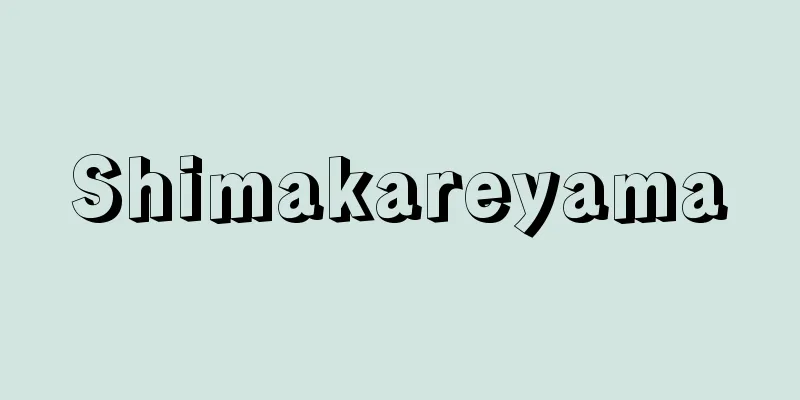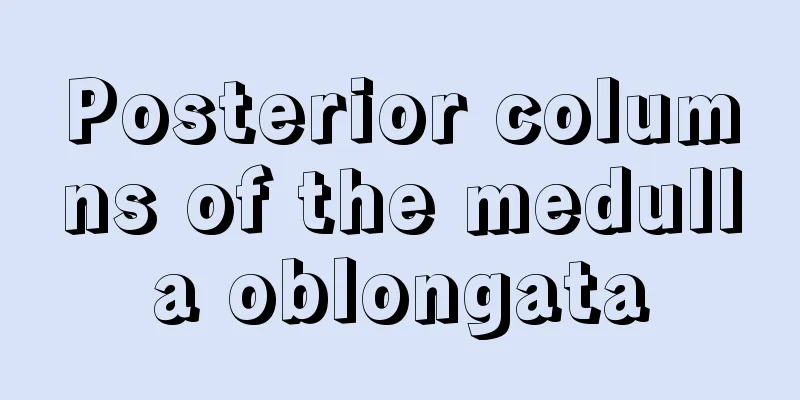Atsushi Miyakawa

|
Art critic. Born in Tokyo. Son of a diplomat, he began learning French in his second year of high school. Entered the University of Tokyo in 1951. In 1953, when he entered the Department of Art History in the Faculty of Letters, he started a reading group for French texts with Suehiro Tanemura and Yoshio Abe (1932-2007). This reading group, which continued until his later years, began with Breton's Surrealist Manifesto (1924), followed by Bonnefoy, Blanchot, Paulhan, Bataille, Lacan, Barthes, Derrida, and others. In 1964, Koichi Toyosaki (1935-1989) joined, and around 1974, when Mallarmé became the main subject, Moriaki Watanabe (1933-2021) and Akimasa Kanno (1930- ) joined. He graduated from university in 1955 and got a job at NHK, but the following year, in 1956, he began publishing art criticism after he became involved in translating art theory. In April 1963, his work "After Informel" was selected as the first place winner in an art criticism contest run by Bijutsu Shuppansha, and he began working full-time as an art critic. In 1965, he left NHK and became a lecturer at the Faculty of Literature at Seijo University, where he taught Western art history. In 1969, he became an assistant professor at the same university. In the 1970s, he also taught at the University of Tokyo and Tokyo Metropolitan University, where he read texts by Barthes, Duchamp, Blanchot, Derrida, and others. He died of liver cancer on October 21, 1977, at the age of 44. As is known from the fact that he titled his acceptance speech for "After Informel" "For the birth of Polemik," Miyakawa Jun consciously tried to be a polemical figure in the world of art journalism. Since "After Informel," what has been clearly put forward is a fundamental criticism of the conventional view of art history that does not question the idea of art as an expression of something, but that the styles suitable for expression are constantly changing, and an emphasis on the expressionistic dimension as distinguished from the expressive dimension following Heidegger's existential/ontological distinction. What has been revealed since Informel and action painting is nothing other than "the modern paradox that the self-purposefulness of the expressive act must be the only engagement of the expressive subject," and therefore the dualism of abstraction/concreteness that is repeated while preserving the schema of the expression of reality (whether external or internal) that precedes expression can no longer be problematic. This art historical understanding, which was extremely controversial in itself, gave rise to a more concrete debate between him and Tono Yoshiaki, the originator of the phrase "anti-art," which was popular at the time. In "Anti-Art: Its Descent into Everyday Life" and "From 'Eternal Possibility' to the Possibility of Impossibility" (both 1964), which was a response to Higashino's criticism ("A Different Theory of Anti-Art: After Miyagawa Jun"), Higashino's recognition that pop artists paint images of the mass media, which are nature to them, just as Cezanne painted Mont Sainte-Victoire, is criticized as being ahistorical, along with the dualism of moving from the impasse of inner expression in abstract painting to the recovery of the factual world in anti-art, and as being merely a discussion on the representational level. He argues that in pop art as in action painting, the issue is nothing other than the annihilation of the classical concept of reality through the independence of the expressive process, this "value transformation on the representational level." These debates, however, were deeply connected to Miyagawa's particular interest in the issue of the image, which was not limited to the polemical context within art journalism. In fact, particularly in the 1970s, he moved away from art criticism in the narrow sense and devoted himself to investigating "the structure of the contemporary imaginaire," and in "Mirror, Space, Image" (1967), which could be considered the starting point of this, he incorporated the aforementioned discussion on "anti-art" in a form that had partially erased its polemical character. He asserts that the efforts of art in the first half of the 20th century to "make painting a first-hand reality" (Leo Steinberg, 1920-2011), like Sartre's theory of the imagination, which is often criticized, eliminated the "dangerous fascination with the image" - the resemblance to something but never being the object itself, and therefore the appearance of a "gap in self-identity."He then goes on to discover that in works of pop art, which present images provided by the mass media as they are, which are not endogenous, there is a return not to things but to the image itself as something that "resembles," and further, a contemporary leading trend toward the independence of the communication process from the individual, which corresponds to the independence of the expression process in art, and the communication of communication itself. The character of Mirror, Space, Image, in which Jasper Johns' paintings and Blanchot's literary theory resonate with each other, is consistent with his later works Between Paper and Gaze (1974) and Fabric of Quotations (1975), but what supports this "peculiar interest" that connects contemporary American painting with contemporary European literature and the humanities is none other than his penetrating grasp of history and his power of recognition. Soon after his death, he published Art History and Its Discourses (1978), which he had been preparing during his lifetime, and compiled the Collected Works of Miyakawa Jun in three volumes (1980-1981). He is also known for his translations of Breton, Bonnefoy, Klossowski, Foucault, and others. [Daisuke Kataoka] "Mirror, Space, Image" (1967, Bijutsu Shuppansha) ▽ "Between Pieces of Paper and a Gaze" (1974, Eperve) ▽ "The Fabric of Quotations" (1975, Chikuma Shobo) ▽ "Art History and Its Discourse" (1978, Chuokoron-Shinsha) ▽ "The Collected Works of Miyakawa Jun, 3 volumes (1980-1981, Bijutsu Shuppansha)" [References] | | | |Source: Shogakukan Encyclopedia Nipponica About Encyclopedia Nipponica Information | Legend |
|
美術批評家。東京生まれ。外交官の息子で、高校2年のころからフランス語を学び始める。1951年(昭和26)、東京大学入学。文学部美術史学科に進学した1953年より種村季弘(すえひろ)、阿部良雄(1932―2007)らとフランス語テクストの読書会を開始。晩年まで続いたこの読書会ではブルトン『シュルレアリスム宣言』(1924)を皮切りに、ボンヌフォア、ブランショ、ポーラン、バタイユ、ラカン、バルト、デリダなどが読まれ、1964年には豊崎光一(1935―1989)が、マラルメを主たる対象に据えた1974年ころからは渡辺守章(もりあき)(1933―2021)や菅野昭正(かんのあきまさ)(1930― )が加わった。1955年に大学を卒業、NHKに就職するが、翌1956年に美術論の翻訳にかかわったのをきっかけに美術批評を発表した後、1963年4月、「アンフォルメル以後」が美術出版社主宰の「芸術評論募集」で一席入選作になり、以後美術批評家として本格的活動を開始。1965年にはNHKを退職、成城大学文芸学部講師となり、西洋美術史を講ずる。1969年、同大学助教授。1970年代には東京大学、東京都立大学でも教鞭(きょうべん)をとり、バルト、デュシャン、ブランショ、デリダ等のテクストを講読した。1977年10月21日、肝臓がんにより死去。享年44歳。 「アンフォルメル以後」入選の辞を「ポレミークが生まれるために」と題したことからも知られるように、美術ジャーナリズムの世界における宮川淳は、自覚的に論争的存在であろうとした。「アンフォルメル以後」以来明確に打ち出されるのは、何ものかの表現としての芸術という観念を疑わず、ただ表現にふさしい様式が永久に交替していくばかりだという従来の美術史観への根底的な批判であり、ハイデッガーにおける存在的/存在論的の区別にならって表現的次元とは区別される表現論的次元の強調である。アンフォルメルやアクション・ペインティング以後に露呈したものとは「表現行為の自己目的化が表現主体の唯一のアンガジュマンたらざるをえないという現代の逆説」にほかならないのであってみれば、表現に先だつ現実(外的なものであれ、内的なものであれ)の表現という図式を温存したまま繰り返される抽象/具象の二元論は、もはや問題とはなりえないのだ。それ自体としてこのうえなく論争的なこうした美術史的認識は、当時人口に膾炙(かいしゃ)した「反芸術」なることばの解釈をきっかけとして、当のことばの発案者たる東野芳明(とうのよしあき)との間により具体的な論争を引き起こすことになった。「反芸術 その日常性への下降」、および東野による批判(「異説・反芸術――宮川淳以後」)にこたえた「『永遠の可能性』から不可能性の可能性へ」(ともに1964)では、セザンヌがサント・ビクトワール山を描いたのと同様にポップ・アーティストたちは彼らにとっての自然であるマス・メディアのイメージを描き出すという東野の認識が、抽象絵画における内的な表現の行き詰まりから反芸術における事実的な世界の回復へという二元論ともども非歴史的であり、単に表現的次元での議論であるにすぎないとして批判され、アクション・ペインティングにおいてと同様ポップ・アートにおいても、問題となるのは表現過程の自立を通しての、現実という古典的な概念の空無化、この「表現論的な次元での価値転換」にほかならないのだと説かれている。 こうした議論は、しかし、美術ジャーナリズム内部での論争的文脈のみに限定されない宮川に固有の関心事、イマージュの問題と深くかかわっていた。実際、とりわけ1970年代の彼は狭義の美術批評を離れて「現代のイマジネールの構造」の究明に意を注ぐことになるが、その端緒というべき『鏡・空間・イマージュ』(1967)には、「反芸術」をめぐる前述の論考が、そのポレミックな性格をなかば消された形で組み入れられている。そこで彼は、「いかにして絵画をファースト・ハンドの〈現実〉にするか」(レオ・スタインバーグLeo Steinberg、1920―2011)という20世紀前半の美術の努力は、繰り返し批判されるサルトルの想像力論と同様、「イマージュの危険な魅惑」――何かに似ており、しかしけっしてその対象それ自体ではないこと、それゆえの「自己同一性の間隙(かんげき)」の出現――を消滅させてしまうと断定し、そしてマス・メディアに与えられた内発的ならざるイマージュをそのままに提示するポップ・アートの作品のうちに、事物への回帰ではなく「似ている」ものとしてのイマージュそれ自体への回帰を、またさらに進んで、芸術における表現過程の自立に対応する、コミュニケーション過程の個人からの自立、コミュニケーションそれ自体のコミュニケーションという現代の主導的傾向をみてとろうとする。ジャスパー・ジョーンズの絵画とブランショの文学論が響き合う『鏡・空間・イマージュ』の性格は、後の『紙片と眼差とのあいだに』(1974)、『引用の織物』(1975)にも一貫したものであるが、アメリカの現代絵画と現代ヨーロッパの文学や人文科学を結び付けるこの「奇妙な興味」を支えているのは、透徹した歴史把握と認識の力にほかならない。病没後まもなく、生前から準備されていた『美術史とその言説』(1978)が出たほか、『宮川淳著作集』全3巻(1980~1981)が編まれた。ブルトン、ボンヌフォア、クロソウスキー、フーコーなどの翻訳でも知られる。 [片岡大右] 『『鏡・空間・イマージュ』(1967・美術出版社)』▽『『紙片と眼差とのあいだに』(1974・エパーヴ)』▽『『引用の織物』(1975・筑摩書房)』▽『『美術史とその言説』(1978・中央公論社)』▽『『宮川淳著作集』全3巻(1980~1981・美術出版社)』 [参照項目] | | | |出典 小学館 日本大百科全書(ニッポニカ)日本大百科全書(ニッポニカ)について 情報 | 凡例 |
Recommend
Azuki bean weevil - Azuki bean weevil
...An insect of the beetle order Bruchidae family...
taun
...Lychee and longan in southern China, rambutan ...
Fjalarr
…Kvasir traveled the wide world, imparting wisdom...
Okubo Hikozaemon
Born in 1560 in Odawara [Died] Kan'ei 16 (1639...
Rivera, Diego
Born: December 8, 1886 in Guanajuato [Died] Novemb...
Shin width - Habaki
A clothing accessory used to protect the shins an...
History of the Conquest of Andalusia
…A great scholar of his time, skilled in poetry, ...
Seven Mile Pass - Shichirihangoe
A road from Kaizu (Makino-cho, Takashima City, Shi...
Substitute succession - Daishuusozoku
When a child or sibling of the decedent who is the...
Iwaki [town] - Iwaki
A former town in Nakatsugaru District, Aomori Pref...
Floating - Floating
〘 noun 〙 A military force that waits away from the...
Echeveria gibbiflora - Echeveria gibbiflora
...13 species, including Echeveria setosa Rose et...
Ochiai (music) - Ochiai
...The first section, called daijo, was a place o...
Amidon Miiro Tateha - Amidon Miiro Tateha
...There are less than 10 species, and some schol...
Seal certificate - Inkanshoumei
This is a certificate that the seal impression on...









